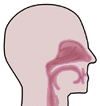  |
||
 |
August 2017Olfactory Receptor Cells: Similar to Auditory Hair Cells?Olfactory function depends upon specific ciliated cellular receptors which may be in some sense analogous to auditory hair cells. Characteristics of these olfactory receptors have been well studied in tissue culture (1,2). Olfactory function depends upon the presence of ciliated neuroepithelial cells which are generated from a stem cell present at the basal portion of the olfactory epithelium (3,4). Olfactory receptor cells are distinctive because they contain no blood vessels, lymphatics or mitosis yet they turnover rapidly, in some cases daily (5). These cells which are required for olfaction and depend upon stimulation of these stem cells to induce generation of these receptor cells are as necessary for olfaction as are hair cells for hearing. These olfactory stem cells depend upon growth or transcription factors to initiate the metabolic process necessary to maintain these olfactory receptor cells and thereby maintain normal olfactory function. We have identified several of these growth or transcription factors which include cAMP (6), cGMP (6) and sonic hedgehog (7). In the absence of these growth factors, olfactory function diminishes (8,9) similar to the loss of TGE, BMP, FGF and WNT signaling associated with loss of cochlear hair cell growth and development of hearing loss. Whereas studies of hair cell generation have been successful in vitro further studies have not resulted in clinical improvement in human hearing. In contrast, increasing secretion of cAMP, cGMP and sonic hedgehog in humans with diminished olfactory function by use of phosphodiesterase inhibitors has increased production of these olfactory receptor cells and has restored smell loss (hyposmia) toward or to normal in many patients who have this clinical problem (5). Indeed, similarity of olfactory and auditory receptors has been reported previously in in vitro studies in which olfactory precursor cells have been differentiated into auditory hair cells (9). The olfactory system seems to be less complicated with respect to receptor growth and development than the auditory system. However, methods which generate olfactory ciliated receptors and thereby improve hyposmia have not been utilized to generate auditory hair cells to improve hearing. While the olfaction model may be less complex than the auditory model concepts by which olfaction has been improved may prove useful to that of restoring hearing. References
|
|